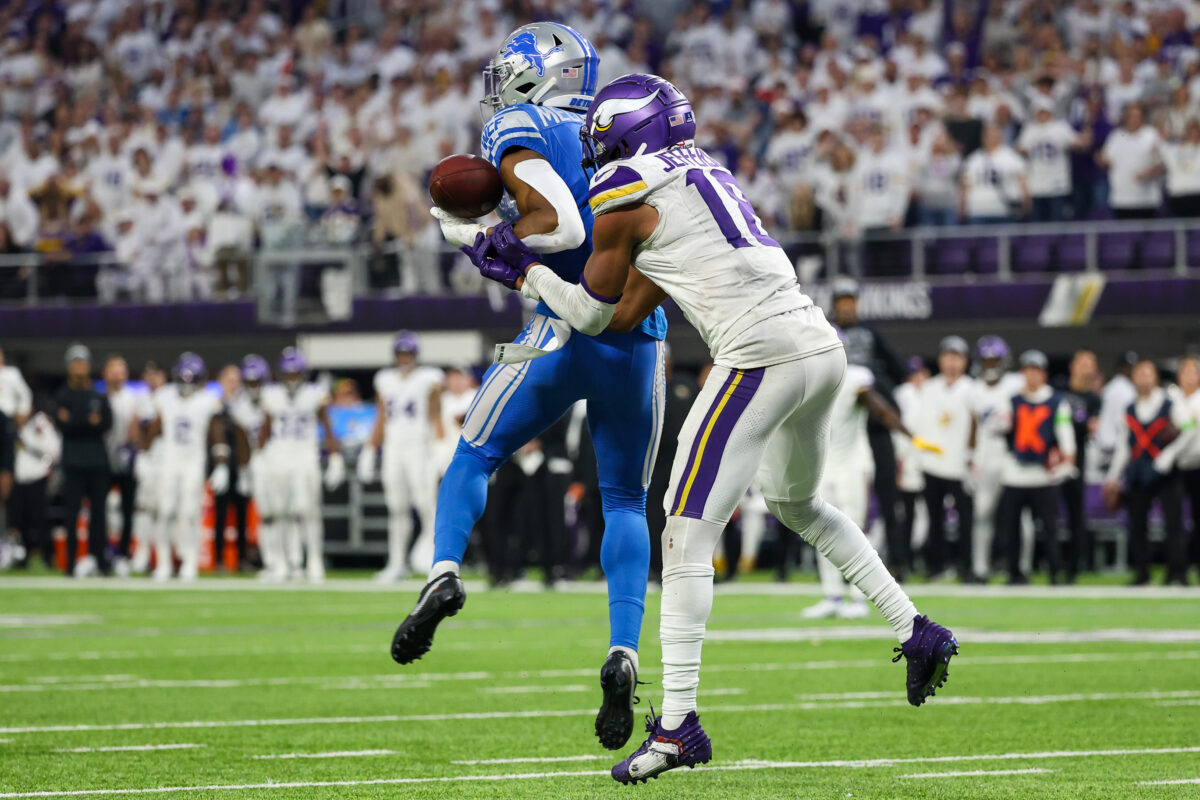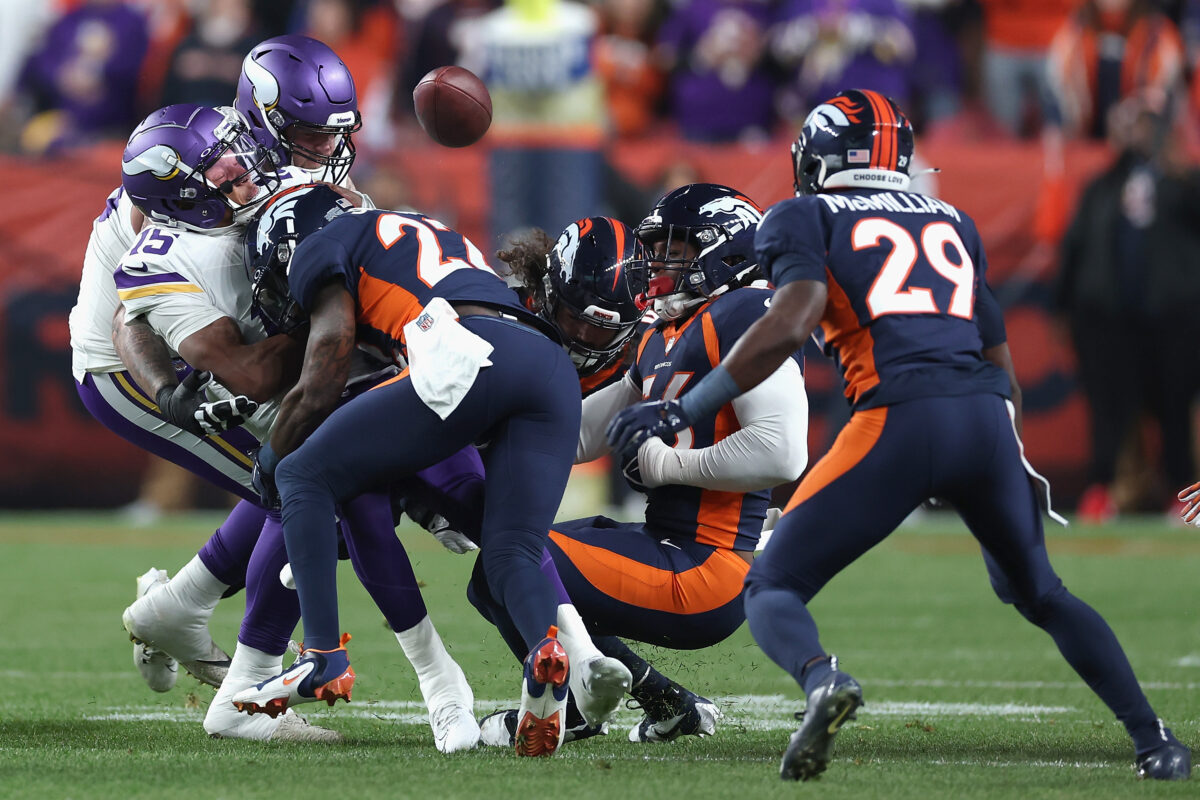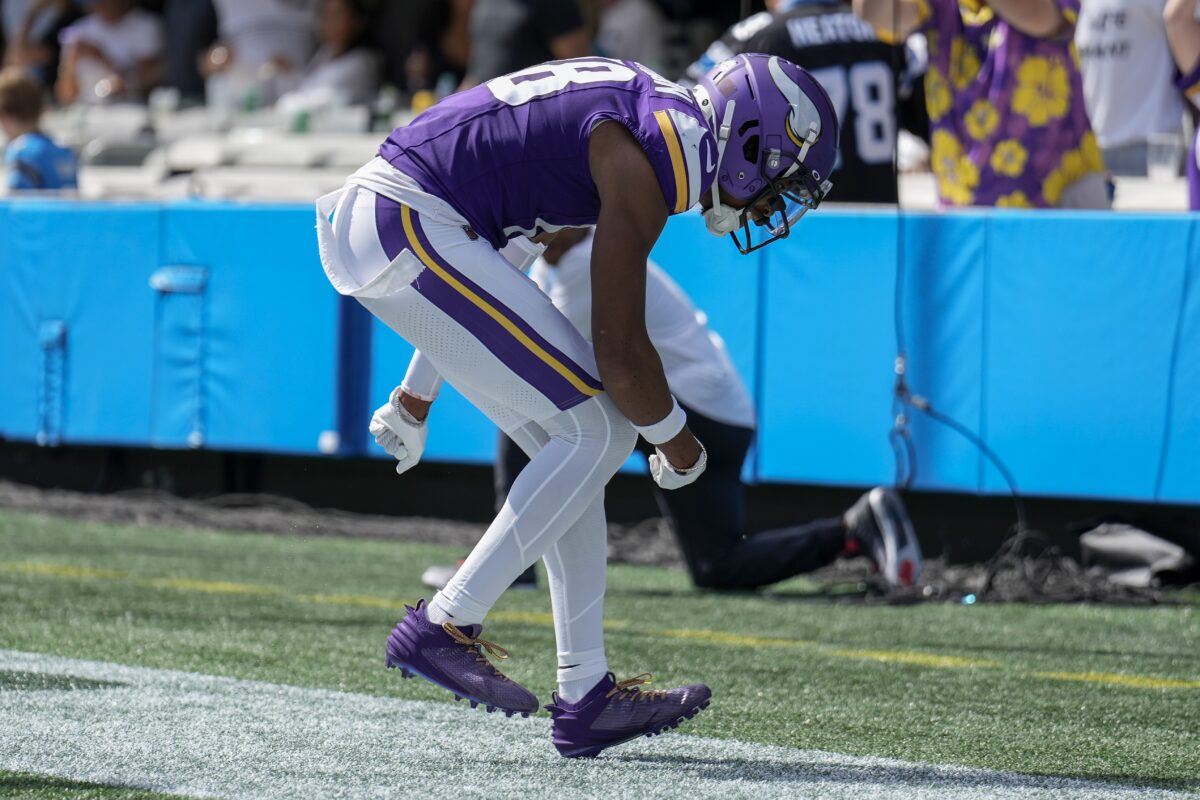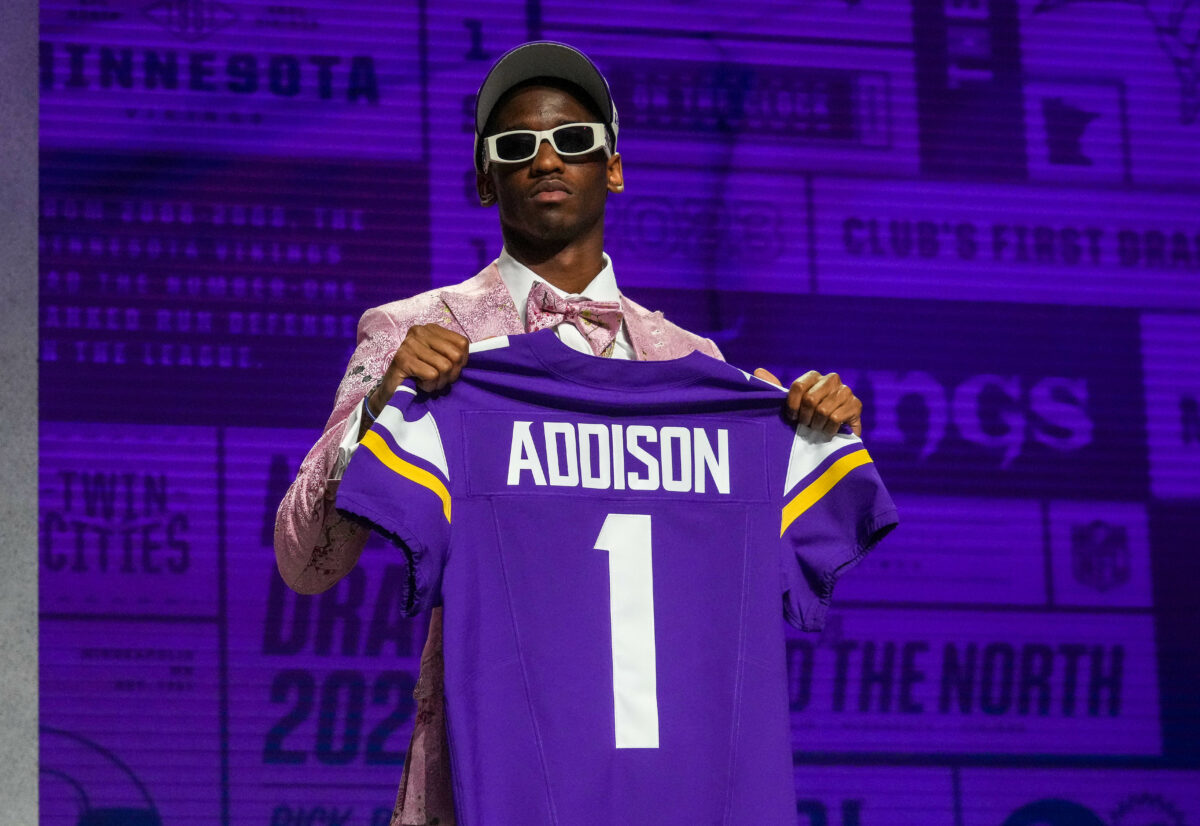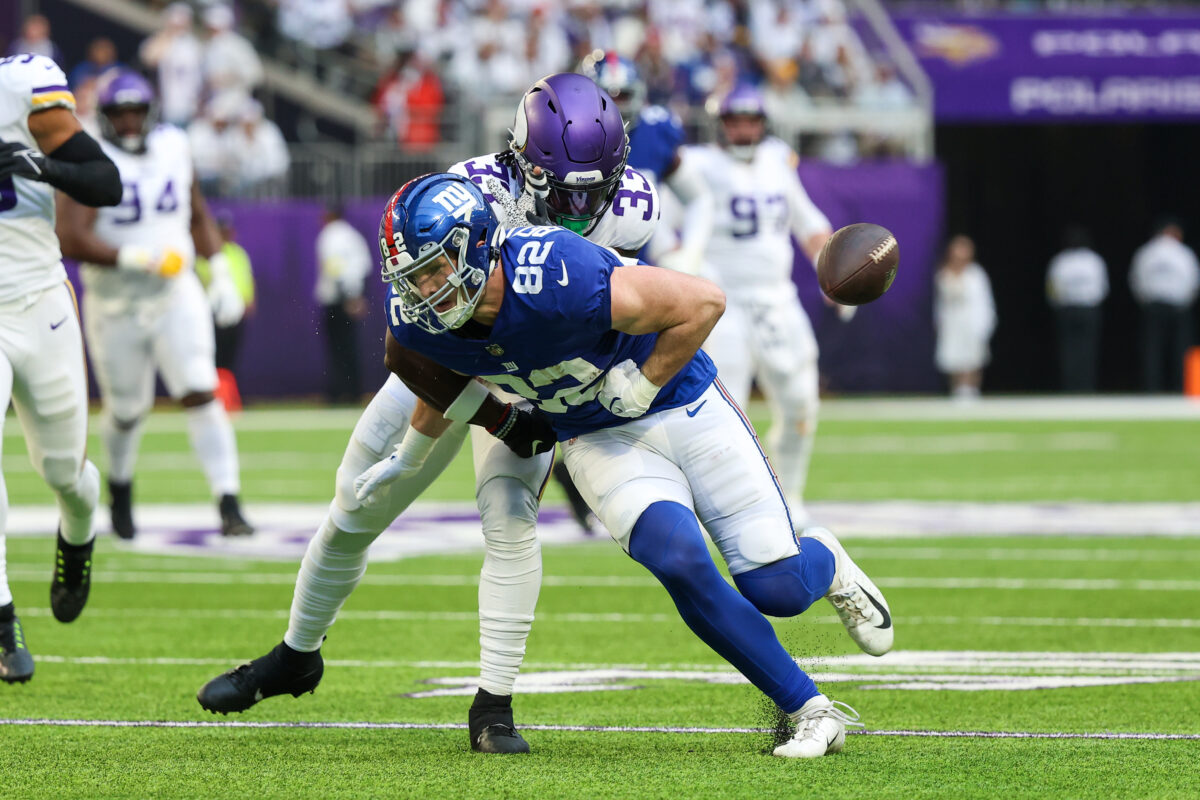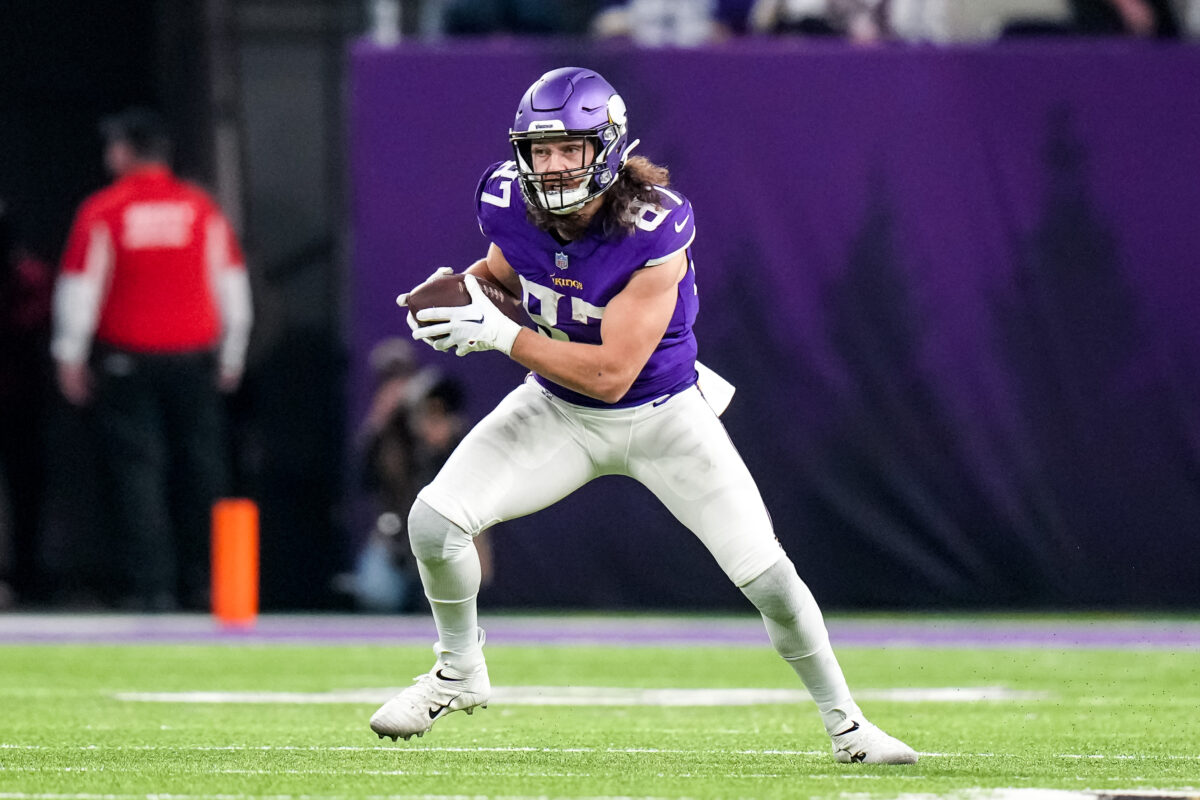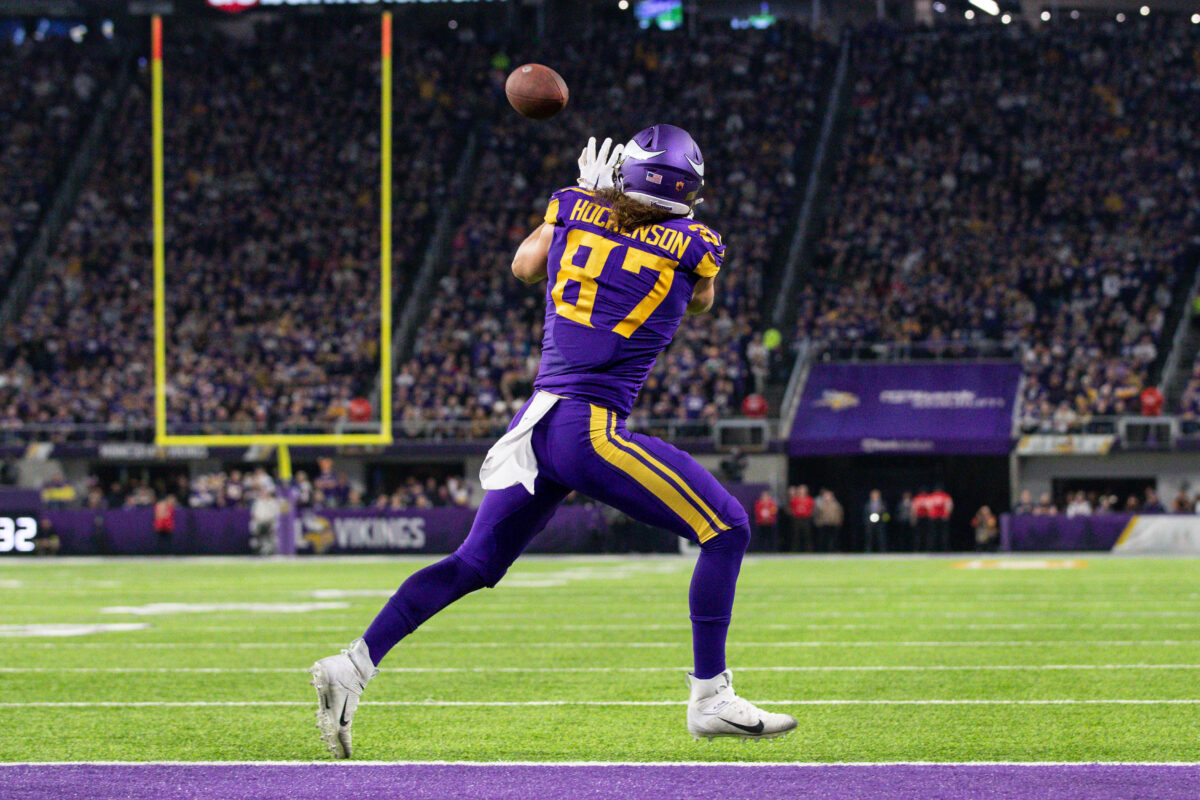Sometimes when you see an interception thrown my the quarterback, especially one that is a backup like Minnesota Vikings QB Nick Mullens, it’s easy to place the blame on the quarterback. They are the one who makes the decision and throw that results in the interception.
However, it’s not always that simple. Yes, their pass resulted in an interception, but was it bad process? How did the result happen? The full answer lies in the process that Mullens used, especially when you see someone like Brandon Powell wide open with his arms up.
First, let’s talk about the formation. They start in a 3×2 set with Ham motioning in as an extra pass protector. Justin Jefferson is in the inside slot with Brandon Powell between him and K.J. Osborn. Having Jefferson in the slot will give him a free release and that’s key here.
The concept here is dual crossers from the strong side with a Y-cross from the far side with Johnny Mundt. It’s design is to put the safeties in conflict and in doing so, creates an opening for Jefferson at the top of the screen. Jefferson widens his route to create some extra space with the safety up top to make the throw a little easier for Mullens.
The progression has Powell, who runs into the flat as an outlet, essentially meaning that he’s an afterthought of the play. Mullens sees that Jefferson gets open and makes the correct read to get him the football. Unfortunately, the pass comes out of his hand like a wounded duck and it gets intercepted by Ifeatu Melifonwu.
The question that everybody had after the game was: Why didn’t Mullens throw the ball to Powell? The answer is simple.
Jefferson was open for a touchdown.
Yes, it stinks that pass got intercepted. Yes, the throw was bad but the process to make the decision to target Jefferson was smart. A good throw makes this a touchdown. Considering multiple factors, including you need a touchdown to win the game at the end, Mullens used the right process, he just can’t throw up a wounded duck. That is what you get with a backup quarterback at times and it’s beyond frustrating.
When the Vikings look to determine their starting quarterback for Sunday’s game against the Green Bay Packers, process is going to be more of a deciding factor than strictly results, but you still have to make the throws.
In conclusion, it’s fine to be mad at the result because of a wonky throw that only happens once out of every 100 attempts, but throwing to Powell for him to only gain 10 yards when the touchdown was there isn’t something worth being mad at. In fact, it would have some fighting against Kevin O’Connell for being “too conservative” as a playcaller.
[lawrence-related id=88433,88428,88426,88424,88421,88372,88410]
